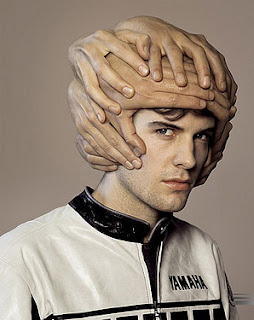In my generation, some kids grew up wanting to be astronauts. Others wanted to be actors, politicians or rock musicians. I didn't share any of those dreams, except for the last one, and I achieved it, if peripherally: I was part of a punk rock band that played in bars where patrons were too angry or drunk or stupid to know or care how awful we were. As a "percussionist" (that's what I told people I was; in reality, it was a fancy way of saying "drummer") and backup singer (another euphemism), all I really had to do was bang and scream to songs--a few of which I wrote--with lyrics that are unprintable even in non-family publications and websites.
I say I achieved my dream "peripherally" not only because I was even worse than any of those booze-addled patrons may have thought I was. You see, I didn't want so much to be a musician as to bang and wail my way into a finale in which I smashed a guitar onstage and screamed, "Pete Townshend is bullshit!." It wasn't because I hated The Who's string-plucker (although we all know he couldn't hold a Fender to Jimi Hendrix or even Eric Clapton); I just thought it would be a way of showing how much more angrily hip or fashionably angry I was than everybody else--which, in the internal and external worlds I inhabited, would have been saying something, if I didn't quite know to whom.
Anyway, I mention all of this to mention my real dreams: to work on the Calypso with Jacques Cousteau (which I wanted to do even more than to be a marine biologist, which is what I told my parents, teachers and guidance counselors I wanted to do) and to win the Nobel Prize for Literature and the Tour de France.
About wearing the maillot jaune while flying down the Boulevard de Champs-Elysees: Yes, I wanted that, but at that time it was about as realistic a dream for me, or any other American, as it was for a newly-freed female slave to become President. I did, however, have a brief and inglorious racing career (no prize money, but a few prizes and a third-place trophy I still have somewhere) and, partly as a result of that part of my life, realized a related dream: a Campagnolo-equipped bicycle.
As I rode, I realized that some parts--especially the hubs, bottom brackets and brakes--lived up to their reputations. While none were substandard, a couple of pieces weren't quite what I expected. One was the Nuovo Record rear derailleur. Yes, it was well-made and nicely-finished. It also shifted predictably, at least once you knew its, shall we say, quirks. But when it was introduced, in 1967, it offered a better shift than almost anything else available.
Within a few years, other derailleurs that were developed at the same time offered easier, more accurate and more predictable shifts and cost less and others that were lighter, simpler or prettier, became widely available. And all of them were less expensive than the Nuovo Record, let alone the Super Record. But Campagnolo equipment remained de rigueur in the peloton because of its head-start in establishing itself. Teams gave their riders Campagnolo-equipped bikes--and folks like me saved our pennies or lived, ironically, on foods that wouldn't be allowed on any training table--because the spare wheels and parts in neutral-support vehicles were from Campagnolo, and the spare bikes had Campy equipment. In other words, what we and they rode was dictated, in part, by interchangability.
I thought about that when reading about what Victor Campanaerts planned to ride in Omloop Het Nieuwsblad, the race that traditionally opens the season in his home country of Belgium. His Ridley Noah fast was equipped with a Dura-Ace 12-speed system--with two twists: a single chainring in the front and a Classified Powershift two-speed rear hub.
The rear hub allows Campanaerts to ride a single chainring (62 teeth!), thus eliminating the need for a front derailleur. That makes the bike somewhat more aerodynamic but, more important for the purposes of Omloops, reduces the chances of "dropping" a chain. Apparently, that has been a frequent occurrence during the race which includes cobblestones and is often seen as a kind of earlier, smaller version of Paris-Roubaix.
That setup means, of course, that if he were to have a problem with the hub—or get a flat—he wouldn’t be able to ride one of the spare bikes and the neutral-support mechanics won't have a replacement wheel or parts for it. (When racers get flats, the wheel is changed: Fixing the flat would take too much time.) So...would he revert to a conventional system?
Turns out, he had another bike just like it. Apparently, he didn’t need it.






















